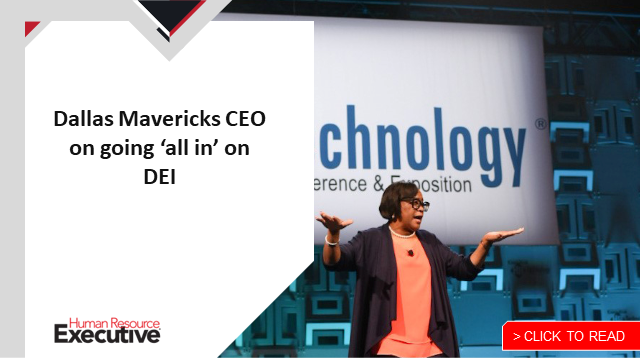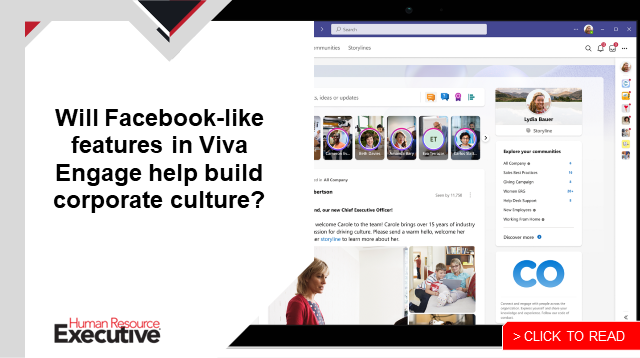The suddenness of the pandemic brought to light how negative and unexpected change can wreak havoc on organizations and entire industries if not effectively managed. As a result, and as is the case with many other business processes, change management has surged in popularity in recent years. But change can also be positive. Rapid growth, for example, is often a metric of business success. However, like any period of development or transformation, growth brings about a number of changes that require a systematic approach.
Navigating change requires dual roles from HR
Evolution doesn’t happen without change. A business cannot evolve into something bigger, greater, more productive, more efficient or more joyful without adapting and transforming. So, while change may be difficult and challenging, it can be approached with a positive attitude because, on the other side of change, is often something even better.
Change management can help lead to positive outcomes. Although the process is a collective effort, HR is foundational to successfully navigating through the changes that come with growth and transformation. HR’s two main roles are communicator and facilitator. Consider these statistics:
- 20% of organizational change failures are due to a lack of effective communication;
- 73% of employees affected by change experience medium to high levels of stress; and
- 75% of change destinations were reached when employees were included in early planning.
According to Prosci, a global leader in change management solutions, “Although it is sometimes called the soft side of change, managing the people side of a change is often the most challenging and critical component of an organizational transformation.” Employees will want to know how the change affects them, how it affects the company and what the future might look like after the change. HR serves as a global unifier for an organization to really ensure that change is delivered from top to bottom, bottom to top, and that the connections are made through the whole organization, especially in times of positive or developmental change like rapid growth.
Develop an effective communications strategy to manage change
People are referred to as “creatures of habit,” and for good reason. Change can trigger people’s fears and stir up corporate gossip or suspicion of new initiatives. As a result, with any kind of change, including rapid growth, you will encounter some level of resistance. Many employees will want to stick with the old ways of doing things and will reject change. You can get ahead of these issues with a solid communications plan that combines the right information with the necessary tools and resources.
The plan should include consistent talking points for leadership. It’s important to communicate what changes will occur during this period of rapid growth and why. Be honest and transparent and disclose as much as you can to reduce rumors and build trust among your workforce. Reinforce the positives. How will the change make the company stronger? How will employees benefit? What new positions will open up?
Bring employees into the conversation early about how to make the change, and listen to their suggestions and proposed solutions. On the same note, whenever someone before us has a really effective way of doing something, it’s incumbent upon us as leaders to recognize that genius, consider whatever change we’re trying to manage and implement the strategies or processes that have historically worked. Standing on the shoulders of others is a great way to manage change so that we don’t fall prey to the same mistakes.
Because change can be difficult to sustain, it’s imperative that the necessary resources are in place to support the change, including leadership buy-in, the appropriate combination of technologies and an adequate budget. Ensuring the right tools and training are in place to facilitate and support the change will make the change more palatable for everyone. Thinking through what will be needed in advance, as well as listening to the needs of your change agents and responding swiftly, will help make adaptation to the changes more effective.
The more you can galvanize the workforce and employees at all levels to be supportive of the change and communicate throughout the process successful wins, celebrating accomplishments and fostering a culture of recognition, the better and faster you’ll help modify the point of view of those who are still resistant to the change and bring them along on the journey.
Other change management best practices during periods of growth
 Throughout the change management process, remember to reinforce and communicate the vision of how the future will be different from the past and how the change will make that vision a reality. Communication is the most vital tool we have to facilitate effective change, and encouraging ongoing collaboration not only makes the change possible, but it solidifies the change outcomes. Encourage suggestions, creativity and innovation throughout the process and support non-traditional ideas, activities and actions by all of those involved. This engagement helps all feel connected to the change, the process and the outcome.
Throughout the change management process, remember to reinforce and communicate the vision of how the future will be different from the past and how the change will make that vision a reality. Communication is the most vital tool we have to facilitate effective change, and encouraging ongoing collaboration not only makes the change possible, but it solidifies the change outcomes. Encourage suggestions, creativity and innovation throughout the process and support non-traditional ideas, activities and actions by all of those involved. This engagement helps all feel connected to the change, the process and the outcome.
In times of really exciting change, like growth and opportunity, having successful change management creates a forum for us to compound that success, double down on the opportunities and grow in a positive way that sets us up for future success and future opportunity. This is a transformative approach to change management.
The post Managing the people side of change in times of rapid growth appeared first on HR Executive.